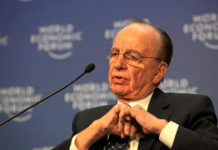Tom Crilly, a Workers’ Party activist in the Ringsend area of Dublin, calls for greater unity to build the left alternative inside and outside the Dáil
Everyone on the left sees the need for unity, or at least the benefits of left co-operation, a strategy that broadens campaigns on the political, social and economic issues of the day.
It can be an effective strategy that can elect socialists into Dáil Éireann, the European Parliament or onto the National Executive of SIPTU and UNITE.
Some just fly the slogan of left unity to discredit small left wing parties; others use it in an attempt to embarrass the Labour Party away from another discredited coalition government with Fine Gael.
Recently Sinn Féin called for a broad left alliance within the Dáil comprising of themselves, Labour, the Greens and other progressive independents. They have also rejected accusations by yet another breakaway group Éirígí, that they have abandoned all their principles and are now a reformist group, a Fianna Fáil (Mark 2).
In the late 1980s when the Workers’ Party gained seven seats in the Dáil, Sinn Féin accused them of becoming just another social democratic group, a Labour Party (Mark 2).
In the past the Green Party gained a radical image whilst many of its member maintained it had no ideological baggage, but they are now regularly accused by the Labour Party of abandoning many of their core principles by supporting a discredited government.
There are many positives and many historical successes gained by left unity but sometimes they are overshadowed by the negatives. Fear that our ideology and our principles may become diluted or corrupted. The fear that careerists and cult personalities may highjack the work of the ideologically motivated activists on the ground, is not fully appreciated by the electorate. Perhaps it is this fear of the corrupting nature of power itself that holds us all back.
The Republican Congress in 1934 (covered in the last edition of LookLeft) was a very brave attempt to marry republican and socialist activists around issues. This attempt was repeated in the 1960s and 70s with the Housing Action Committees, the Resource Protection Campaign, the Anti Apartheid Campaign, the Anti War Movement, CND, the Irish Women’s Liberation Movement, and others.
In Northern Ireland republicans, socialists and trade unionists campaigned under the slogans, “workers unite” and “sectarianism kills workers” and these campaigns led to the Peace Train in the late 1980s.
The broad left developed the May Day Committee in the early 70s, encouraging a campaigning Dublin Council of Trade Unions (DCTU) who provided the leadership for the Tax Marches in 1979/80. Remember the slogans ‘Tax the Greedy Not the Needy’ and ‘People before Profit’. In the early 1990s the DCTU formed an alliance with inner city communities (ICON) called the Dublin Citywide Campaign on the Drugs Crisis which led to the National Drugs Strategy and the setting up of Local Drug Task Forces.
This year’s May Day March organised by the DCTU was a very low key event livened up by a radical speech by the former National Union of Mineworkers leader Arthur Scargil, who asked ‘where is the leadership of the Irish trade union movement today and what are they doing to defend workers’? One week later people marched along the same street to the Dáil and listened to community activists venting their anger on this corrupt government and the bail out of bankers and property speculators.
The struggle continues, and in pursuing our aims the Left must not be reticent in building broad support outside and inside the Dáil.





The hypocrisy of Sinn Fein calling any party ‘just another social democratic group’, look where they are today in the North and look at the part they played in dividing the working class in Northern Ireland since 1970. The Civil rights movement did more to change things for working class people in the north than all of the so called ‘Anti-imperialist’ military actions over 3 decades. How can a party which embraces capitalist ideology call for unity of the Left? What exactly is Sinn Fein’s ‘strategy’? Trade Unions and others on the left need to take a serious look at the contradictions between the rhetoric and the deeds of this party, especially in the north. The recent rallies and protests against the ‘Draft parades and assemblies bill’ highlighted these contradictions, where S.F. trade unionists were on the streets protesting against proposed legislation, which was drafted by S.F. and the D.U.P. which if enacted would criminalise those organising Trade Union led protests on the streets.
It would also appear that the S.F. leadership managed to enlist the help of Eirigi in an atempt to thwart the mass rally against the bill in Belfast on 26th June, when this group held a protest outside the City Hall just before the ‘Kill the Bill’ rally was to assemble there, in an attempt to weaken cross community support for the rally.
Sinn Fein’s motive in calling for any kind of unity of the Left is to take control of any such movement and destroy it, be warned.
I think the above reply goes against the mood of the article ‘The Left needs to move beyond name calling’